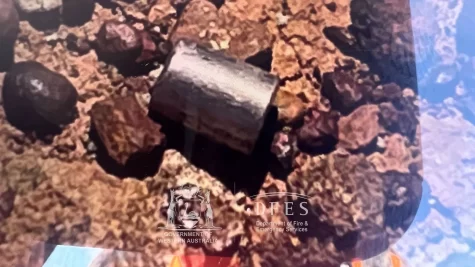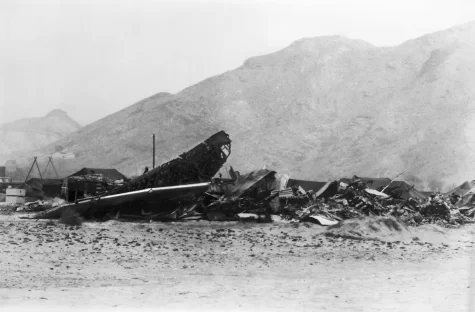
Jack Wolfsohn | Head Editor
February 2, 2023
Surprisingly, radioactive material can “fall out” of truck beds in western Australia.
During its 870-mile voyage, the tiny capsule sprang loose and became lost in the Outback. Fortunately, after six days of a search team using radiation detection equipment, they recovered the capsule.
It’s as if they found a needle in a haystack.
The capsule is tiny, 0.31 inches by 0.24. However, finding something of that size over the period of a week with special equipment isn’t all that impressive; it’s the fact that nobody ran it over, causing it to lodge in their tires.
The capsule contains Cesium 137, a radioactive isotope formed from nuclear fission. Additionally, this marble-sized container emits dangerous amounts of radiation, which could be lethal if exposed for too long.
The lost capsule quickly became a safety concern because of how quickly it could travel. Imagine it gets picked up by an unknown driver, heads partway to an unknown location, but then dislodges itself from its tire, only to be picked up again by another unknown driver. The ease of mobility that this highly dangerous capsule possessed is shockingly unrivaled.
Senior Christian McCleary said, “[t]here has to be some consequences for losing environmentally damaging and cancer-causing radioactive material. Mistakes can be made, but this company’s incompetence could have killed people.”
Well, I am happy to report that Rio Tinto Iron Ore, a massive mining company and the perpetrator of this whole ordeal, has apologized and been fined a whopping $710. Sweet, sweet justice!
To shift directions a bit, radioactive and nuclear material is appallingly lost more frequently than is initially thought.
Throughout the Cold War, America lost more than just nuclear material, but whole nukes from time to time. The 32 incidents involving accidental launches, radioactive contamination, and straight-up loss are known as “Broken Arrows.”
Luckily (somehow, this is more lucky than horrifying), only six nuclear weapons have been lost and never recovered.
The two most shocking instances of nuclear weapon negligence are in Georgia in 1958 and North Dakota in 2007.

In 1958, a nuke-carrying bomber collided with an F-85 in the air, damaging the bomber substantially. Being unable to land slowly enough to ensure the bomb would be 100% intact, the pilot decided to ditch the nuke off Georgia’s coast while at 7,200 feet in the air (by some miracle, it didn’t explode). Reports indicate it is unlikely to explode if it remains untouched, but it was also never found.
In 2007, a bomber took off in North Dakota and landed in Louisiana, but its wings were mistakenly mounted with multiple nukes, and for a day and a half, the US military had no idea where the nukes were.
Senior Mylo Groves says, “How is it possible to misplace nukes? They kill millions, can annihilate huge cities, and seem difficult to create. They’re not something to be lost in the first place.”
As time passes, I am increasingly impressed with how capable humanity is of being its own worst enemy.

Leave a Reply